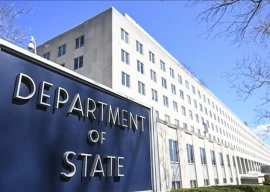
The sudden aid cutoff and withdrawal of all foreign troops and contractors from Afghanistan by the US/Allied governments after Doha Agreement amplified a logistic catastrophe that was long in the making. This piece would continue the debate in the light of February 2023 report by SIGAR (Special Inspector General for Afghanistan Reconstruction), a US government entity. SIGAR identified the multifarious factors for the spectacular failure of Afghan National Defence and Security Forces (ANDSF) in August 2022.
First, the over-reliance of ANDSF for critical components on foreign-based contractor support. The AAF (Afghan Air Force) long accustomed to the Soviet inventory (MI-17 helicopters) was later equipped (rather thrust upon) with the more complex US aircraft, UH-60 Black Hawk helicopters, for which Afghans had no maintenance experience. Afghan crews never exceeded more than 40% maintenance ceiling for most AAF airframes. So, the maintenance support was outsourced to the mainly US contractors.
As per TAAC-Air, 2017 estimates, AAF was capable to maintain its Mi-17 fleet till 2019, yet transition to US-made Black Hawk helicopter was greenlighted, due to Russia’s annexation of Crimea in 2014 and non-availability of Russian spares. This moved the AAF self-sufficiency timeline to 2030, a decade later than the US commitment to removing all US military and contractor support from Afghanistan. The DOD had also planned to “replace the Special Mission Wing (SMW)’s remaining Mi-17s with CH-47 Chinook helicopters by 2023”. DOD knew that both the AAF and SMW could not maintain their fleet without contractor support. After June 2020, for some time, the withdrawn contractors communicated with Afghan crews through available means to assist in the maintenance jobs, but this remained limited in utility. The AAF support was critical to warfighting by the ANDSF, as it was realised soon.
The argument that even the US Aviation was dependent upon ‘contractor-support’ appeared self-defeating because the US contractor community was home-based. For Afghanistan, it was foreign-based, expensive and remote. Here the role and the outsize influence of the Washington Beltway Contractor Community in the relevant policy formulation and implementation comes into question. Staffed with retired services personnel, this community knew how to make money, and reaped hefty windfalls in Afghanistan.
ANDSF especially the AAF, its SMW, and Special Forces were reliant upon US advisers and TAAC (Train, Advise and Assist Command). AAF force structure was also under constant changes till very late in the war, “creating additional managerial challenges for the Afghan government”.
Second, the effects of curtailed logistics. General Miller, the ‘Resolute Support’ commander warned of ANDSF’s lack of vital air support and maintenance in March 2021. Withdrawal of contractor support in June 2020 led to the grounding of 60 per cent Black Hawks, reducing operational support to ground troops, with no alternative plan in place. The AAF and SMW were providing food, ammunition, water, other military equipment, etc. These were used in relief rotation and evacuation support for the dead and injured, besides close air and operational support to ground troops. Removal of such critical air support, and the perils of ground transportation due to Taliban attacks further demoralised ANA and ANP soldiers on isolated bases.
The state of ANDSF’s motor vehicles was worse. The Afghan crews’ maintenance share was roughly 4 to 30%. The rest was by foreign contractors. Spares were available but could not be distributed due to limited or no air supply to the strung-out ANDSF elements deployed on remote and isolated check posts, and due to the dangers of overland movement. As a sad consequence of the impaired logistics, “ANDSF abandoned 200 checkpoints in Kandahar” alone in December 2020.
Third, effects on Special Forces. Afghan Special Security Forces, particularly the commandos of ANA Special Operations Command (ANASOC), were better trained than ANA or ANP units. However, these were over-reliant on their US advisers for direction and leadership in joint planning; maintenance of their operational readiness; and provision of intelligence, reconnaissance, surveillance, and air to ground coordination support.
Before the Doha Agreement, commandos were conducting operations independently under ANASOC, and were still reliant on the US Forces for material support. Later, the absence of ‘partnered missions’ and dwindling logistics curtailed ANASOC’s operational effectiveness. After some time, commandos were placed under tactical control of ANA Corps, which generally interfered with their command-and-control structures. Commandos, being a desirable asset due to their air mobility and enhanced training, were also used to compensate for ANA/ANP’s limited operational efficacy due to their ground resupply difficulties. This led to commandos’ intense employment in roles “as little more than skilled infantry” under their own increasingly adverse air and logistics situation. Strung out and isolated Afghan posts frequently called upon ANASOC commandos “to conduct missions to keep ANDSF checkpoints from being overrun”. Commandos were generally employed beyond the mandatory 72 hours limit for rest, maintenance, and refit between missions. This overuse, misuse and consequent fatigue resulted in commandos’ loss of operational readiness. Conventional ANDSF units were able to react to the tempo of Taliban’s multi-front strategy. However, enhanced demand for commandos increased tempo for ANASOC. This combined with deteriorating operational situation, lack of US air support, overuse and clumsy logistics brought ANASOC almost to the breaking point.
Afghan government’s (and ANDSF) dependence on the foreign support was known to the US DoD, as Gen McKenzie, Commander CENTCOM, warned Pakistan in February 2021 of the government collapse in Kabul in case of an early pullout. As far back as 2014, in his testimony to the Senate Armed Services Committee, General Joseph Dunford, the then ISAF commander, warned of ANDSF’s deterioration asserting; “I think the only debate is the pace of that deterioration.” To make matters worse, Ashraf Ghani’s centralisation of the procurement system under the National Procurement Commission, established to curb corruption and enhance transparency, worsened both. The Ashraf Ghani regime sadly either did not know the extent of ANDSF-US dependency, or willfully ignored it, or tried using it as a bargaining chip against a complete pull-out of foreign forces.
But the larger picture of politicisation of ANDSF and over-centralisation of its planning process is next week. Meanwhile Eid Mubarak!
Published in The Express Tribune, April 20th, 2023.
Like Opinion & Editorial on Facebook, follow @ETOpEd on Twitter to receive all updates on all our daily pieces.




















COMMENTS
Comments are moderated and generally will be posted if they are on-topic and not abusive.
For more information, please see our Comments FAQ